These tasty Korean foods are gold-medal worthy.
10 Foods from Korea You Should Know About That Aren’t Kimchi
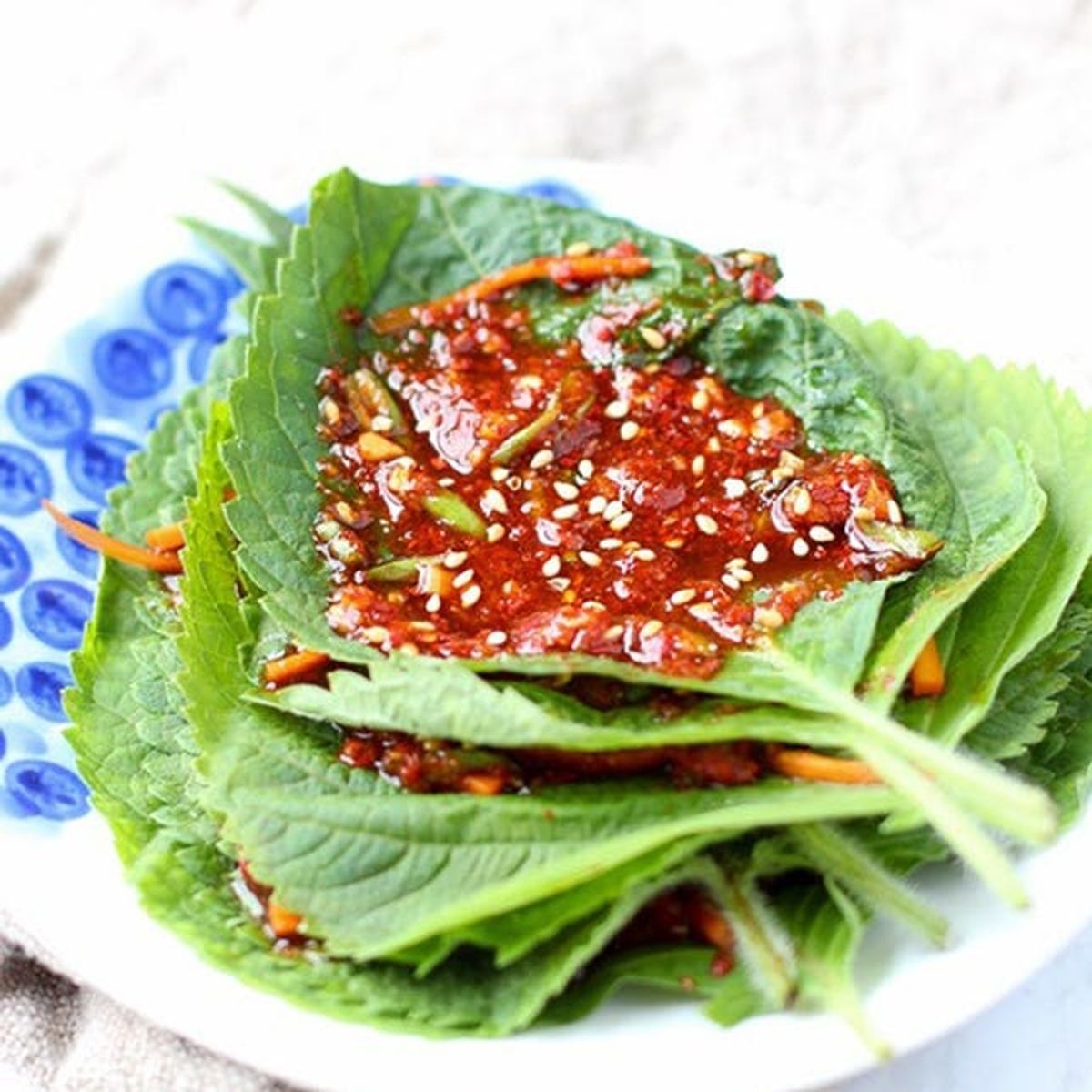
By Justina HuddlestonFeb 14, 2018
Justina Huddleston
Justina Huddleston is a food writer living in Los Angeles. When she's not busy writing, she spends her time in the kitchen creating both virtuous and decidedly junky vegan food. Buffalo chickpea pizza, anyone? She's also been known to eat a plain block of tofu or beans straight out of the can for lunch, but somehow those culinary adventures don't make it to her Instagram. You can follow Justina on Twitter or see what's cooking in her kitchen on her blog, A Life of Little Pleasures.
 You may have tried Korean barbecue dishes like beef bulgogi or some trendy gochujang-infused recipes in the past, but we went to an expert to find out which Korean foods deserve a little more time in the spotlight. Angela B. Lee is a nutritionist and doctoral student of Traditional Chinese Medicine who has experience in the restaurant industry, has consulted for federally funded programs in New York City and Los Angeles, and more importantly, is one heck of a cook. She shared with us some of her favorite Korean foods, including simple dishes she eats at home and some of the ingredients you should stock your pantry with if you're interested in learning to cook them for yourself. You can follow Lee's cooking adventures on Instagram @bongahcooks, and her medicinal recipes @TheAcuChef. In the meantime, check out her insight into 10 of the tastiest Korean dishes to get to know for yourself.
You may have tried Korean barbecue dishes like beef bulgogi or some trendy gochujang-infused recipes in the past, but we went to an expert to find out which Korean foods deserve a little more time in the spotlight. Angela B. Lee is a nutritionist and doctoral student of Traditional Chinese Medicine who has experience in the restaurant industry, has consulted for federally funded programs in New York City and Los Angeles, and more importantly, is one heck of a cook. She shared with us some of her favorite Korean foods, including simple dishes she eats at home and some of the ingredients you should stock your pantry with if you're interested in learning to cook them for yourself. You can follow Lee's cooking adventures on Instagram @bongahcooks, and her medicinal recipes @TheAcuChef. In the meantime, check out her insight into 10 of the tastiest Korean dishes to get to know for yourself.
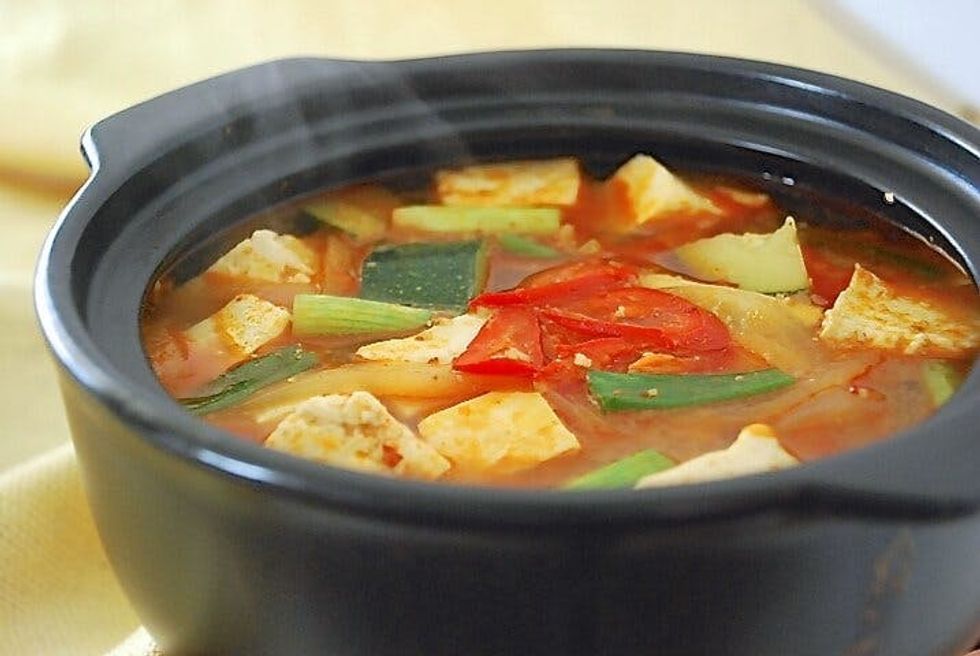 The Korean Pantry: According to Lee, there are a few ingredients you should have on hand if you want to try cooking Korean food for yourself. She recommends stocking up on gochujang (fermented chili paste), doenjang (fermented soybean paste), sesame oil, sesame seeds, soy sauce, malt syrup, gochugaru (red chili pepper flakes), vinegar, salt, sugar, garlic, and ginger. Once you have these you can try your hand at some classic dishes, like the doenjang-jjigae (soybean paste stew) pictured above. (via Korean Bapsang)
The Korean Pantry: According to Lee, there are a few ingredients you should have on hand if you want to try cooking Korean food for yourself. She recommends stocking up on gochujang (fermented chili paste), doenjang (fermented soybean paste), sesame oil, sesame seeds, soy sauce, malt syrup, gochugaru (red chili pepper flakes), vinegar, salt, sugar, garlic, and ginger. Once you have these you can try your hand at some classic dishes, like the doenjang-jjigae (soybean paste stew) pictured above. (via Korean Bapsang)
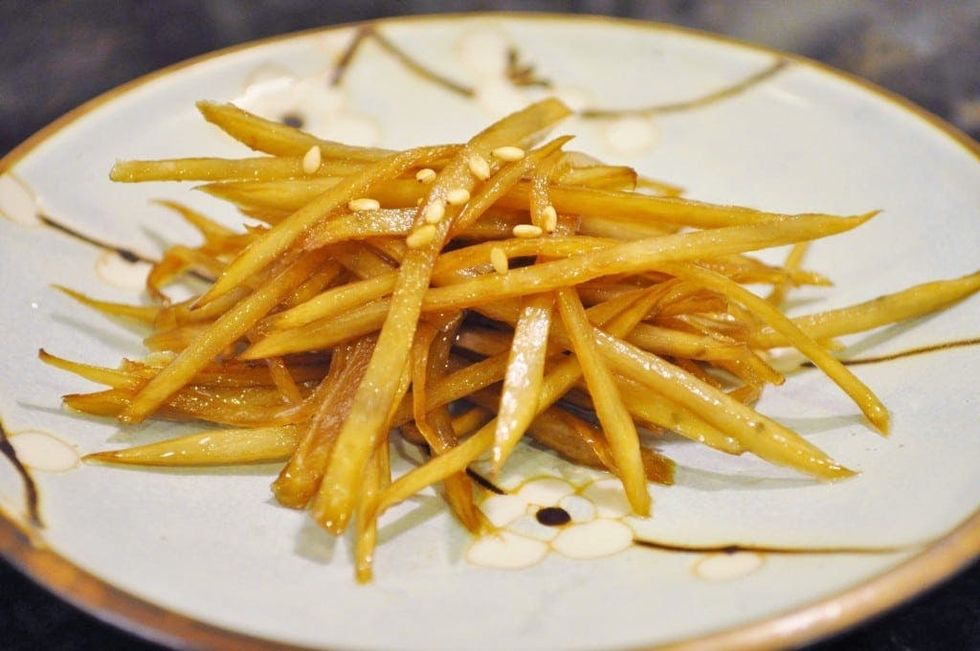 Mountain Vegetables: Korean barbecue is enjoying huge popularity in the US, but homestyle Korean cuisine is actually very vegetable-heavy. Lee says that sautéed and seasoned mountain vegetables (like bracken root, wild aster leaves, and the burdock root pictured) are among the most commonly enjoyed. (via Kimchimari)
Mountain Vegetables: Korean barbecue is enjoying huge popularity in the US, but homestyle Korean cuisine is actually very vegetable-heavy. Lee says that sautéed and seasoned mountain vegetables (like bracken root, wild aster leaves, and the burdock root pictured) are among the most commonly enjoyed. (via Kimchimari)
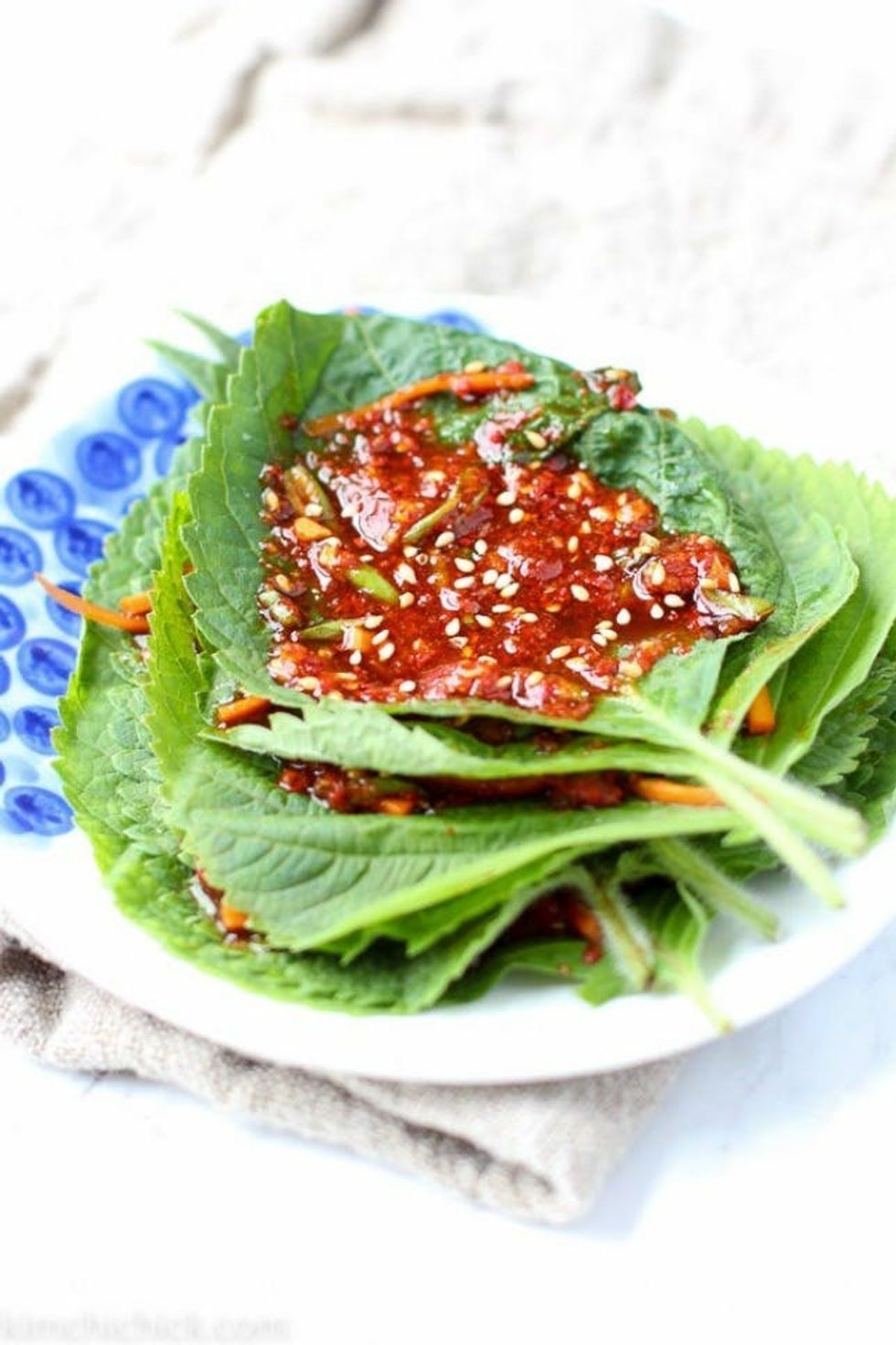 Perilla Leaves: Perilla leaves, which are a member of the mint family and have a grassy flavor similar to shiso, are eaten in many ways. You can wrap fresh perilla leaves around barbecued meats, pickle them, turn them into kimchi, or even fill them with beef and pan-fry them. (via Kimchi Chick)
Perilla Leaves: Perilla leaves, which are a member of the mint family and have a grassy flavor similar to shiso, are eaten in many ways. You can wrap fresh perilla leaves around barbecued meats, pickle them, turn them into kimchi, or even fill them with beef and pan-fry them. (via Kimchi Chick)
 Noodles: Lee told us that there are a lot of tasty Korean noodle dishes to try. Bibim-gooksu (spicy mixed noodles) and jajangmyeon (Korean black bean paste noodles) both hit the spot when you're craving slurp-able comfort food. (via Korean Bapsang)
Noodles: Lee told us that there are a lot of tasty Korean noodle dishes to try. Bibim-gooksu (spicy mixed noodles) and jajangmyeon (Korean black bean paste noodles) both hit the spot when you're craving slurp-able comfort food. (via Korean Bapsang)
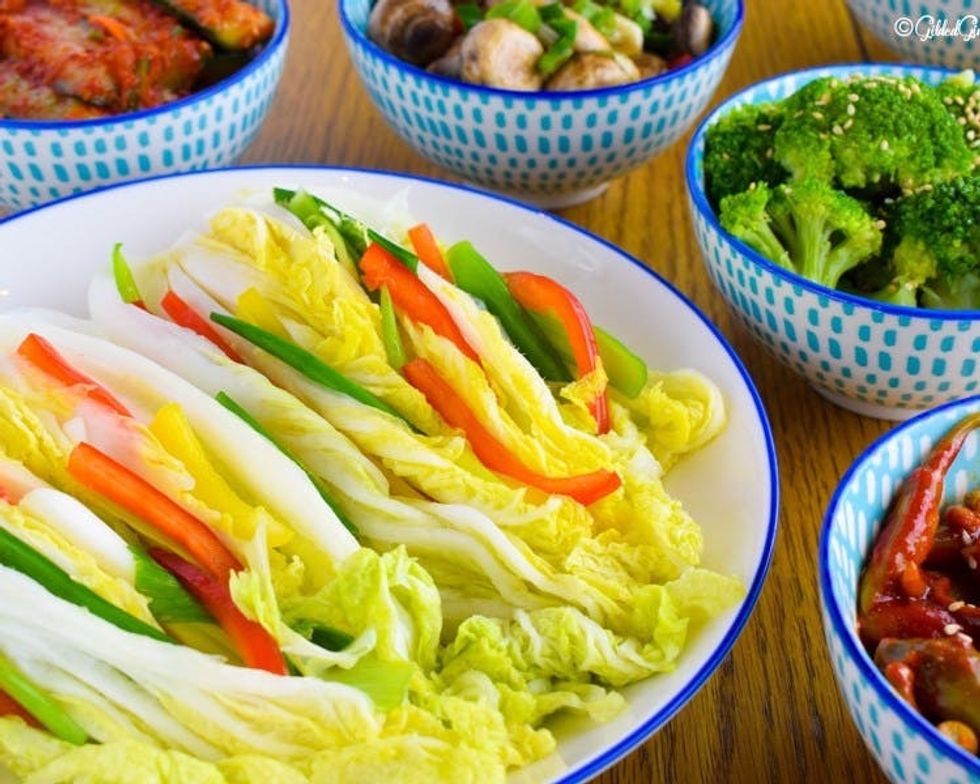 White Kimchi: Kimchi is especially popular these day, but Lee emphasizes that kimchi isn't just the red fermented napa cabbage you might be familiar with. You can turn everything from green onions to Korean radish into kimchi, and there's even a mild version of the dish called white kimchi that's made without chili powder. (via Gilded Gingerbread)
White Kimchi: Kimchi is especially popular these day, but Lee emphasizes that kimchi isn't just the red fermented napa cabbage you might be familiar with. You can turn everything from green onions to Korean radish into kimchi, and there's even a mild version of the dish called white kimchi that's made without chili powder. (via Gilded Gingerbread)
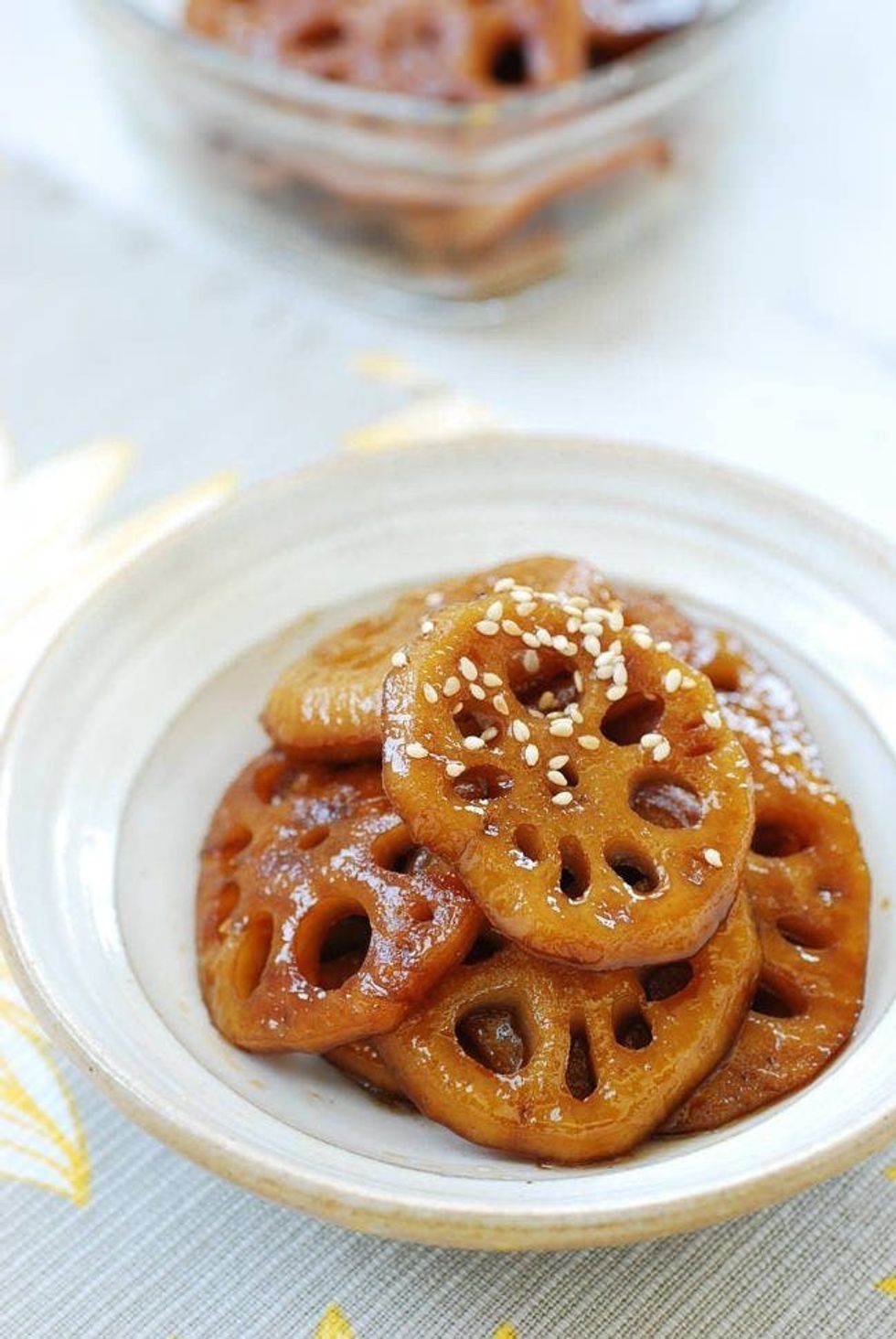 Banchan: Banchan are the side dishes served alongside the main meal in Korean cuisine. There are innumerable banchan dishes to choose from, including spicy dried squid and Americanized potato salad. Lee told us that several banchan dishes are usually made once or twice a week, then eaten with meals throughout. You can even make a simple but flavorful meal out of just rice and different banchan. Sweet soy braised lotus root is a tasty one to try. (via Korean Bapsang)
Banchan: Banchan are the side dishes served alongside the main meal in Korean cuisine. There are innumerable banchan dishes to choose from, including spicy dried squid and Americanized potato salad. Lee told us that several banchan dishes are usually made once or twice a week, then eaten with meals throughout. You can even make a simple but flavorful meal out of just rice and different banchan. Sweet soy braised lotus root is a tasty one to try. (via Korean Bapsang)
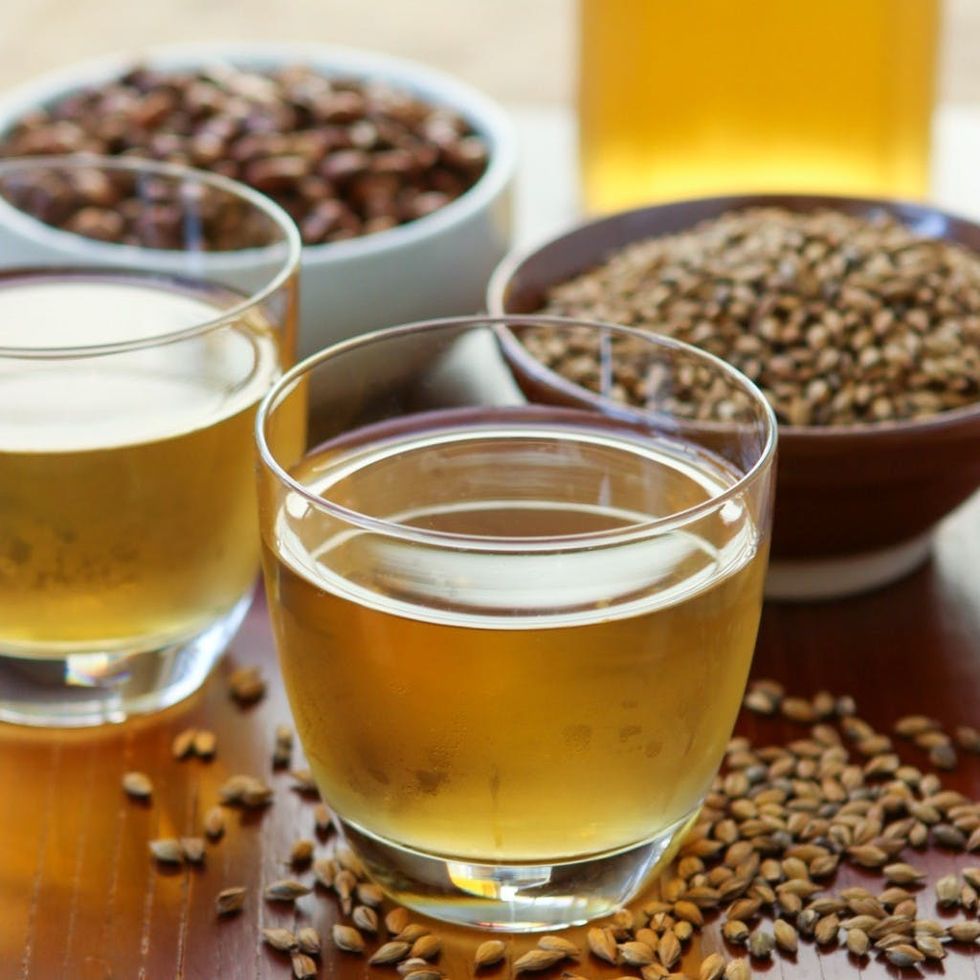 Barley Tea: Thirst-quenching iced boricha, or barley tea, is enjoyed year-round. It has a toasted grain flavor that's unexpectedly refreshing. (via Thirsty for Tea)
Barley Tea: Thirst-quenching iced boricha, or barley tea, is enjoyed year-round. It has a toasted grain flavor that's unexpectedly refreshing. (via Thirsty for Tea)
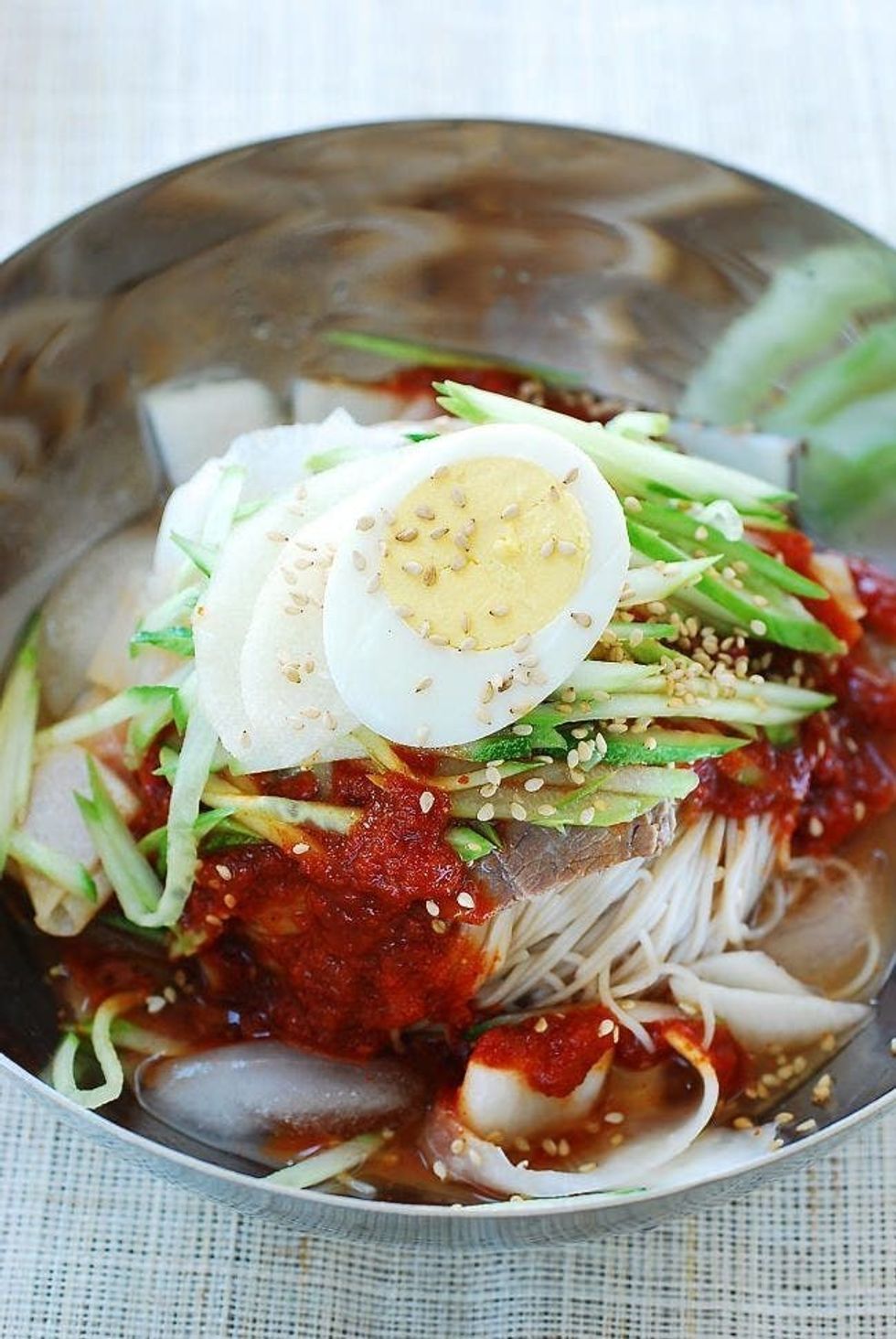 Mul-Naengmyeon: In the summer, noodles might not come to mind as a way to beat the heat, but these icy-cold Korean noodles should do the trick. Mul-naengmyeon is made with chewy thin noodles and a cold seasoned broth, and even has ice cubes dropped into the bowl to make sure everything stays nice and chilled. (via Korean Bapsang)
Mul-Naengmyeon: In the summer, noodles might not come to mind as a way to beat the heat, but these icy-cold Korean noodles should do the trick. Mul-naengmyeon is made with chewy thin noodles and a cold seasoned broth, and even has ice cubes dropped into the bowl to make sure everything stays nice and chilled. (via Korean Bapsang)
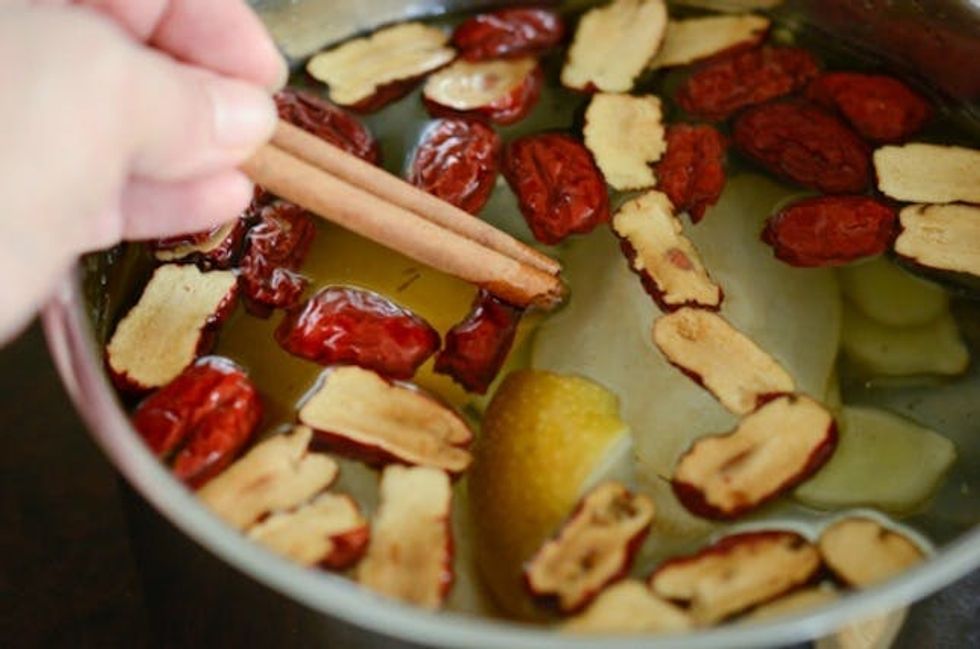 Jujube Tea: Dried jujubes, also called Korean apples, make for a very tasty tea. They're naturally sweet, and the tea has an almost creamy mouthfeel. The addition of pears and cinnamon sticks highlights its flavors. You can drink it warm or iced. Jujubes have a high vitamin C content (more so than most citrus), and the tea is thought to help stave off and ease the symptoms of colds. (via Beyond Kimchee)
Jujube Tea: Dried jujubes, also called Korean apples, make for a very tasty tea. They're naturally sweet, and the tea has an almost creamy mouthfeel. The addition of pears and cinnamon sticks highlights its flavors. You can drink it warm or iced. Jujubes have a high vitamin C content (more so than most citrus), and the tea is thought to help stave off and ease the symptoms of colds. (via Beyond Kimchee)
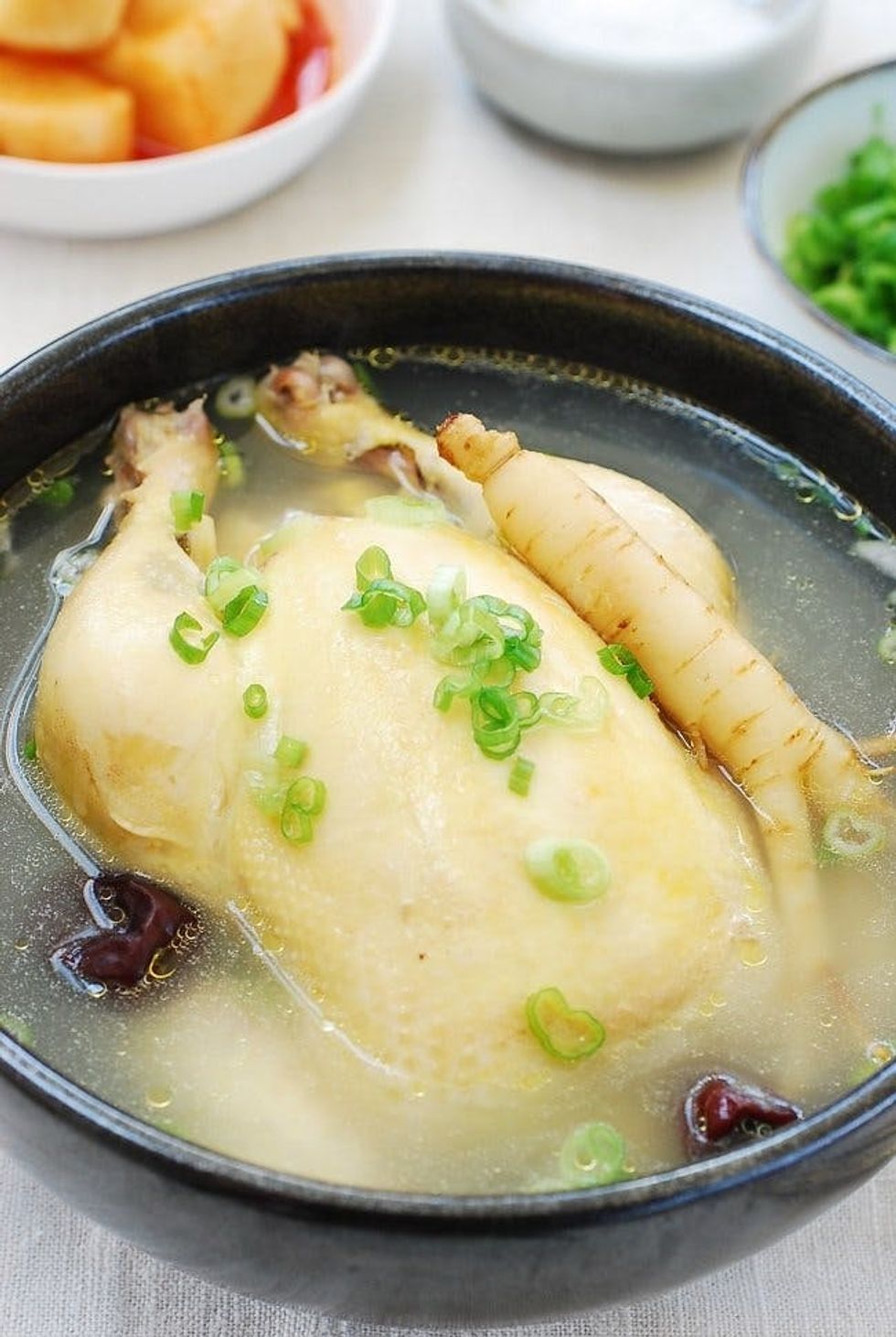 Medicinal Foods: A lot of Korean foods are thought to be medicinal and certain foods are eaten at certain times to help restore balance to the body. Samgye-tang, chicken soup with ginseng, is a hot soup eaten in the summer that helps to fight heat with heat and give energy to the body to battle the temperatures outside. The chicken itself is stuffed with items like glutinous rice, jujubes, garlic, and ginger, then simmered along with the ginseng in an unseasoned broth. Salt and pepper are served on the side so each diner can season to taste. (via Korean Bapsang)
Medicinal Foods: A lot of Korean foods are thought to be medicinal and certain foods are eaten at certain times to help restore balance to the body. Samgye-tang, chicken soup with ginseng, is a hot soup eaten in the summer that helps to fight heat with heat and give energy to the body to battle the temperatures outside. The chicken itself is stuffed with items like glutinous rice, jujubes, garlic, and ginger, then simmered along with the ginseng in an unseasoned broth. Salt and pepper are served on the side so each diner can season to taste. (via Korean Bapsang)
Expand your palate even more with recipes from around the world by following us on Pinterest.
The Conversation (0)
Reviews:
The Latest
Make Your Inbox Your Happy Place
Get freebies, inspo, & more delivered to you.


















